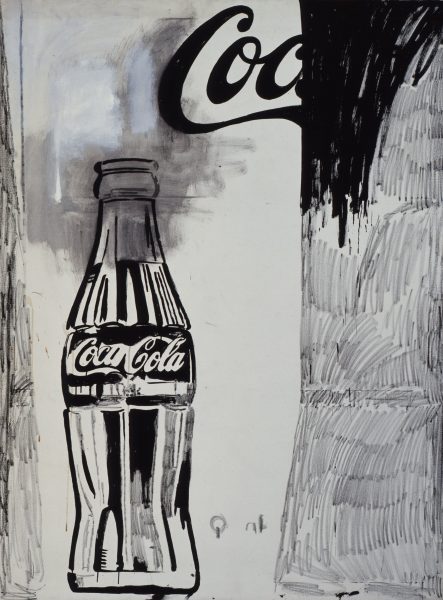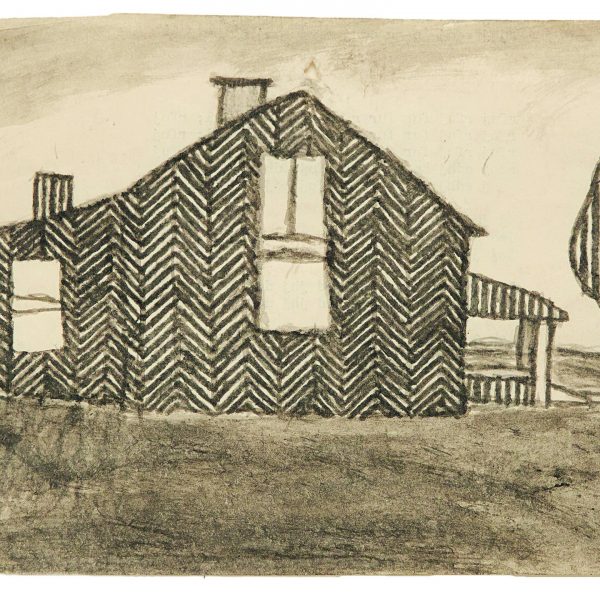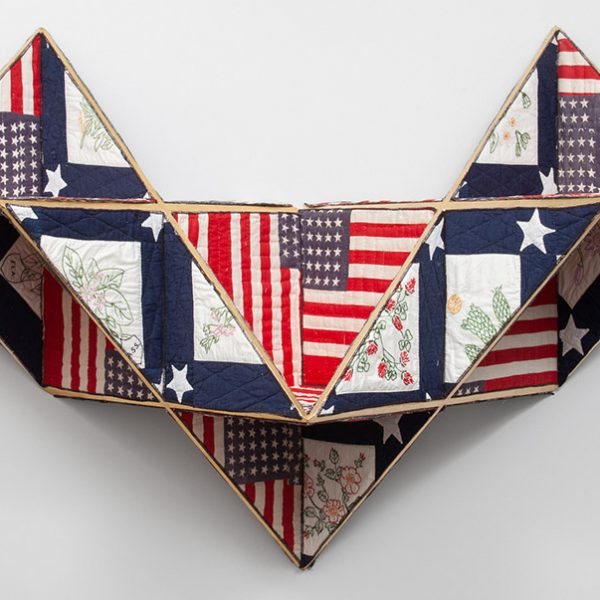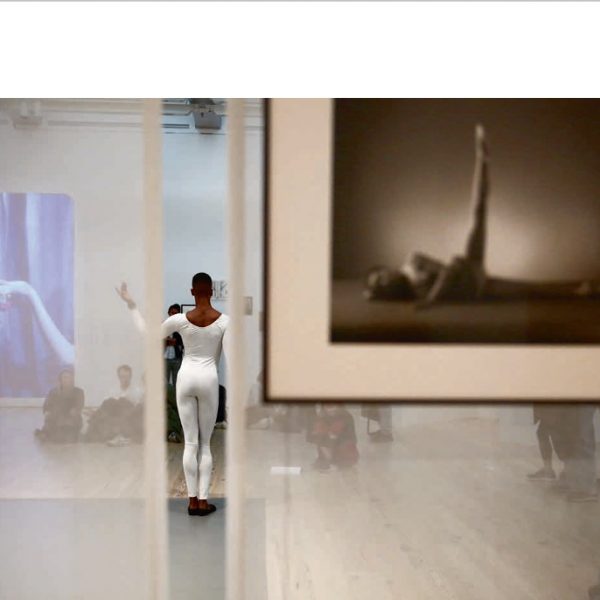Destabilizing the Image: An Andy Warhol Retrospective
Interview with Donna De Salvo by David Ebony
New art’s never new when it’s done. . . It’s not new art. You don’t know it’s new. You don’t know what it is. It doesn’t become new until about ten years later, because then it looks new.
— Andy Warhol, The Philosophy of Andy Warhol[1]
Andy Warhol means something different to anyone you ask. For some, he was a true avant-garde force, with Pop art leading American art and culture out of the doldrums of a post-war, Euro-centric cultural realm of the late 1950s and early ’60s. Many regard his work as the centerpiece of a free-spirited, hip and groovy, high-tech, and distinctly American sphere of fast-paced multimedia synergy. For others, he was a shrewd businessman, an entrepreneurial dynamo with forays into film, theater, music, and TV. His studio became The Factory, and for better or worse, he championed the hyper-commercialization of the art world that today, for some, thwarts the notion of a pure, autonomous and uncompromised artistic expression.
An enigmatic and elliptical public figure in his lifetime, Warhol famously said that in the future, everyone will be famous for fifteen minutes. But since his untimely death in 1987, at age 58, due to complications following gallbladder surgery, Warhol has proven to be an exception to his own prophecy. His renown seems to grow with each passing year and today has reached near-mythic status. His influence on younger artists has been vast, and is by now inestimable. Warhol works routinely sell for tens of millions of dollars at auction, while many of his autobiographical writings remain in print, and his namesake foundation is one of the foremost financial supporters of art and culture in the country today.
 For those reasons, it is curious that, until now, no major survey of the artist’s work had been mounted by an American institution since Andy Warhol: A Retrospective appeared at The Museum of Modern Art in 1989, serving at that time as a memorial tribute and celebration of the artist’s life and career. Opening on November 12th at the Whitney Museum of American Art, Andy Warhol: From A to B and Back Again is a full-scale retrospective that offers for the first time in nearly thirty years an opportunity to reassess Warhol’s monumental yet often misunderstood achievement.
For those reasons, it is curious that, until now, no major survey of the artist’s work had been mounted by an American institution since Andy Warhol: A Retrospective appeared at The Museum of Modern Art in 1989, serving at that time as a memorial tribute and celebration of the artist’s life and career. Opening on November 12th at the Whitney Museum of American Art, Andy Warhol: From A to B and Back Again is a full-scale retrospective that offers for the first time in nearly thirty years an opportunity to reassess Warhol’s monumental yet often misunderstood achievement.
Organized by the Whitney’s senior curator Donna De Salvo, the exhibition features many of Warhol’s best-known works, as well as a number of pieces rarely or never before shown. Works on view range from early, homoerotic drawings and gender-fluid images, to iconic Pop art paintings and sculptures, celebrity portraits, and examples of Warhol’s experiments with advanced technology of his day. The show is accompanied by a fully illustrated catalogue with essays by De Salvo, Okwui Enwezor, Branden W. Joseph, Michael Sanchez, Barbara Kruger, Glenn Ligon, Lynne Tillman, and others. The exhibition and book title is borrowed from Warhol’s 1977 autobiography The Philosophy of Andy Warhol: From A to B and Back Again.

Jean-Michel Basquiat and Andy Warhol, Paramount, 1984–85. Acrylic on canvas, 76 x 105 in. (193 x 266.7 cm). Private collection © The Andy Warhol Foundation for the Visual Arts, Inc. / Artists Rights Society (ARS) New York
The aim of the project is to reevaluate, after three decades, the extraordinary life and career of someone who changed the course of American art history, if not all of international culture. Warhol’s works mark a tumultuous era that spanned the sociopolitical upheavals of the 1960s through the AIDS crisis of the 1980s. In her essay, De Salvo notes that Warhol is identified with a set of iconic American images that seem fixed or intractable, when so much of his artmaking, with its repetitions, distortions, camouflages, incongruous colors, and endless recyclings, hinges on a “destabilizing of the image.”
At their most profound, Warhol’s destabilized images explicate and illuminate our present Digital Age that in many ways Warhol helped create. In a recent telephone conversation, De Salvo shared with me her thoughts about Warhol, his art, the retrospective, and his formidable legacy.
Ebony It is amazing that your show is the first Warhol retrospective in nearly thirty years.
De Salvo A retrospective organized by a U.S. museum, yes.
Ebony Why do you think it’s important for us to reconsider Warhol at this time?
De Salvo I think Warhol remains incredibly influential for many artists. He is an iconic figure in the history of art, certainly. And I think the work has a degree of currency now that is different from the 1960s, or during Warhol’s lifetime, in part due to digital culture. There’s the whole issue of how images are constructed, and disseminated— which Warhol’s work addresses—but it’s now a completely different terrain than during the Pop art era. I also think that there has been on the part of many critics a kind of resistance to Warhol’s later work—of the 1970s and ’80s. I think it’s very important to reassess that work and to connect it to the course of his career. The later work is distinctive—Warhol continued an exploration of image-making, and the use of technology; among the late works there are abstract pieces, as well as more conventional imagery, such as the still lifes.
Ebony You met Warhol shortly before his death.
De Salvo Yes, it was probably late 1985 or early 1986.
Ebony What was that experience like? As a young curator, were you intimidated by him?
De Salvo Absolutely. I was working for the DIA Art Foundation, which has a large collection of Warhol’s work. I did two Warhol exhibitions from the collection, one focused on his “Disaster” paintings. He was rather disengaged and not very interested in dealing with us much on that project. But then I started to organize an exhibition of works he made just before he started using silkscreens, and he found something more intriguing about that. He got much more involved, and started to find paintings for me from the pre-silkscreen period that he had never shown. And that really started a fantastic conversation, which led to a couple of interviews I did with him. We developed a very nice working relationship. That was important for me in wanting to continue exploring his work later on. For me, working with artists is the most rewarding part of what I do as a curator. Even though he was already a historical figure by then, and we were working on a show of works he made many years ago, he was somehow very present and engaged. I also got to see him later, with Fred Hughes and other people from the Factory, and that was fun.
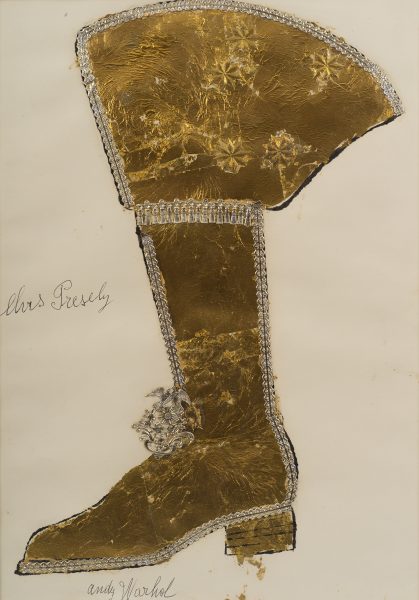
Andy Warhol (1928–1987), Elvis Presley, c. 1956. Collaged metal leaf and embossed foil with ink on paper, 20 × 14 in. (50.8 × 35.6 cm). The Brant Foundation, Greenwich, CT © The Andy Warhol Foundation for the Visual Arts, Inc. / Artists Rights Society (ARS) New York
Ebony In your essay, writing about the pre-silkscreen works of the 1950s, you discuss Elvis’s Boots—based on those Elvis wore in the film Love Me Tender—as being one of the first of Warhol’s “celebrity images.” Could you talk bit about the early work he did for I.A. Miller, the shoe company.
De Salvo From 1955 to 1957, Warhol was the sole illustrator for I. Miller Shoes. He came to New York in 1949, and almost immediately got a job doing illustrations for Glamour magazine. But the I. Miller campaign was a pretty great assignment, and quite lucrative for him. During that two-year period, Warhol became very much identified with shoes. The “gold shoes,” including the “Elvis Boots,” were part of a series of works that anthropomorphizes the shoes, and assigns to them different Hollywood personalities and other celebrities. There’s Mae West, for instance. Warhol was also obsessed with Truman Capote, so there’s a Truman shoe. There’s an array of prominent figures of the day referenced in the titles. He did Christine Jorgensen, one of the first transsexuals to become a public figure in the 1950s. Elvis has this masculine-looking boot, but the surfaces are all encrusted with these glittery appliqués like you find on old-fashioned candy boxes. So the fascination with movie stars was always there for Warhol. It’s interesting that early on he would take an object and give it the character of a living person.
Ebony You discuss in the essay the studio of fashion photographer Otto Fenn, which Warhol frequented, and which was a kind of queer watering hole in the 1950s, where gay people could feel at home.
De Salvo That context was so important for the more coded language of things at the time.
Ebony You mention that Warhol was openly gay, but when I first got to know Warhol’s work, and his public persona, he tried to keep his sexuality ambiguous, or claimed to be asexual.
De Salvo I think that was a later development. That’s an important aspect of the work of the 1950s, which you see in a separate gallery in the show. There are very overt, homoerotic drawings. They’re very beautifully done, often seen as having a kind of Jean Cocteau-like line to them. The people I interviewed who knew Warhol in the 1950s said they appreciated that his personality was rather lighthearted, very playful; and they all knew that he was gay. He was also very young at that point.
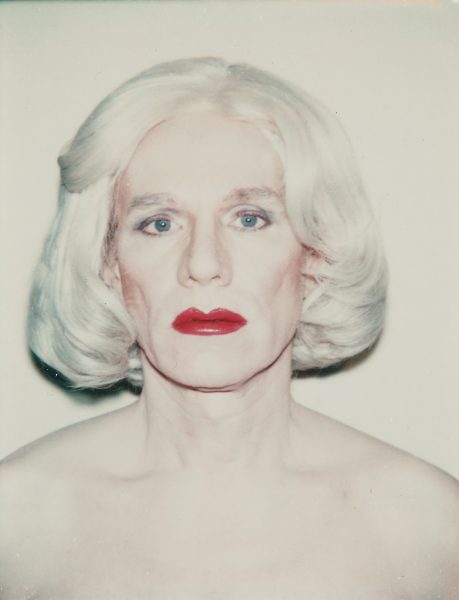
Andy Warhol (1928–1987), Self-Portrait (in drag), 1980. Unique polaroid, 4 1/4 x 3 3/8 in. (10.7 x 8.6 cm). The Brant Foundation, Greenwich, CT © The Andy Warhol Foundation for the Visual Arts, Inc. / Artists Rights Society (ARS) New York
Ebony Warhol’s transitional period—toward the end of 1950s—is fascinating. He tried to move away from gestural painting to more hard-edge imagery associated with commercial art. In 1960 he had a breakthrough after having Henry Geldzhaler, Ivan Karp, Irving Blum, and Emile de Antonio visit the studio together. What an intense studio visit that must have been! Was Warhol just insecure about the work?
De Salvo I think that on one level Warhol knew what he needed to do. But somehow, he had to have the opinions of these influential art-world friends. Warhol writes about it in his Popism book. It’s a period when the predominance of Abstract Expressionism is still lingering. There was a similar kind of transition for other artists like Lichtenstein and Rosenquist. Warhol mentioned to me the importance at the time of Larry Rivers’s gestural figurative painting. Lichtenstein around the same time was making gestural paintings of Bugs Bunny. Artists felt that they had to do that. In Warhol’s early “Coke Bottle” painting in the show, look closely at the drips. They almost appear as if they’ve been placed there, more like a pastiche of gestural painting. Warhol still needed some encouragement to move away from this kind of expressive gestural painting.
Andy Warhol (1928–1987), Coca-Cola [2], 1961. Casein and wax crayon on linen, 69 1⁄2 × 52 1⁄4 in. (176.5 × 132.7 cm). The Andy Warhol Museum, Pittsburgh; Founding Collection, contribution Dia Center for the Arts 1997.1.20 © The Andy Warhol Foundation for the Visual Arts, Inc. / Artists Rights Society (ARS) New York
Ebony Another transition was with the paintings of newspaper and tabloid headlines that led to the iconic images of Elizabeth Taylor and Marilyn Monroe.
De Salvo The notion of topicality is so important for Warhol. He mentioned to me that he once had an idea to produce a painting of a newspaper headline every day. He was a great editor—picture editor, art director—he understands how to use something to maximum effect that is already in the culture. He doesn’t have to create it. He exploits it, and then does something else with it. One idea I had when planning this exhibition was to have a kind of face-off between Marilyn Monroe and Elizabeth Taylor. It was interesting that he had a far greater engagement with Taylor. He used different images of her from various stages of her life and career. For Monroe, it was always the same image, based on the publicity shot from Niagara, her 1953 film. With Taylor, there’s much more of a sustained narrative.
Ebony Warhol was one of the first true multimedia artists—before it became trendy. Would you comment on his forays into other mediums, and other fields outside of fine art, especially mass media?
De Salvo I think it’s part of Warhol’s genius that he was able to radically reinvent every medium that he encountered. Whether it was painting, photography, printmaking, sculpture, he’d push the medium as far it could go, so it makes sense that eventually he would become interested in live performance and film. The early films were so performative, such as, obviously, Screen Tests [1964-66], and they were also improvisational, far ahead of their time. The films were never heavily scripted, and at times the stories were invented as the characters went along, or interacted with other characters. And then there was the Exploding Plastic Inevitable, which was the live performance project he was involved in with The Velvet Underground.
The idea of working cross-media, or inter-media, is evident throughout Warhol’s career. He was always interested in new technology, just as he goes from stamps and stencils, to silkscreen, to photo-silkscreen, to film, and eventually video. He launched his TV program in 1979, on public access, and then on cable. There’s a great short clip you can see on YouTube, where he creates a portrait of Debbie Harry on an Amiga computer. He had a great sense, conceptually, of the possibilities of new media. And it was never predictable. He always does something unexpected with it.
Ebony After the assassination attempt in 1968—shot in his office at the Factory by a writer he knew, Valerie Salonas— there was another transitional period for Warhol. In your essay you mention that after that incident, he became someone else.
Warhol What happened as a result of the assassination attempt, from what I read, and what I’ve been told by people who were there, is that they had to change everything. The Factory could no longer be this open, no—appointment—necessary kind of place. They put in a bullet-proof door. Warhol had to live his life differently than he had in the early sixties. Whether that led to a more serious engagement with painting, one can only speculate. But it is clear that he begins to work in the studio in a somewhat different manner. He begins a deeper investigation into painting, and the works he produced had a much more hand-painted feel. He still uses the silkscreen technique, but the underpaintings become much looser. Warhol questions himself at this point, and worried about the hand-painting, asking himself, “Am I getting too arty?”
Ebony That’s clear in the “Chairman Mao” series, in the 1970s, where the painting style is fluid, and he’s using a variety of colors and gestures underlying the familiar Mao image.
De Salvo There’s quite thick impasto in some of those works. The silkscreen still conveys the image, but there’s now a lot of activity and energy in the background. Apparently, at the time, he went back to rework certain earlier canvases, of the early sixties, such as some works from the “Disaster” series. He touched up the surfaces, darkening the image and actually painting on top of the silkscreen in some areas.

Andy Warhol (1928–1987), Mustard Race Riot, 1963. Silkscreen ink, acrylic, and graphite on canvas, two panels: 9 ft. 5 7⁄8 in. × 13 ft. 8 in. (2.89 × 4.17 m) overall. Museum Brandhorst, Munich © The Andy Warhol Foundation for the Visual Arts, Inc. / Artists Rights Society (ARS) New York
Ebony I wanted to ask about the “Disaster” paintings. They seem to become more relevant each day, with the ever increasing and relentless stream of images of random violence we see repeated over and over again on TV, and on the internet.
De Salvo Many people consider the “Disaster” paintings to be a kind of history painting. They captured a moment then, but, as you say, they are just as relevant today. It’s because of the way he used the photographic image. We still think it’s real. Even though we know the photo can be doctored, or digitally altered today, we still look at it and believe that somehow it’s still linked to the real thing, to reality. For the catalogue, Okwui Enwezor wrote an essay, “Andy Warhol and the Painting of Catastrophe,” discussing the “Disaster series,” including the “Race Riots,” focusing on images of the 1963 Birmingham Civil Rights demonstrations. He discusses the significance and importance of those works today.
Ebony After the “Mao” series, he continued to use similarly provocative imagery, as in the “Hammer and Sickle” series.
De Salvo Warhol had been in Italy in the mid-1970s, working on the “Ladies and Gentlemen” commission, and saw the hammer and sickle graffiti images all over Italy; it was the time of the Red Brigade, and all the labor union strikes. When he came back to the U.S., he started the series, having photographed for the compositions actual hardware—American-made tools, and it’s interesting that he retains the names of the manufacturers in the final paintings.
Ebony For me that series has a special significance because the opening of the “Still Lifes” exhibition of the “Hammer and Sickle” paintings at Leo Castelli Gallery in New York in 1977 was the first time I saw Warhol in person. I was young and too shy or intimidated to go up and say hello to Warhol, who was standing just across the room. But I remember the event vividly, with a shirtless Victor Hugo strutting around the gallery holding a hammer and sickle across his chest.
De Salvo That was actually the first solo show Warhol had in New York after he had been shot. He actually did well with those works; they were quite successful commercially.
Ebony The color and textures are appealing. Once you get beyond the provocation of the image, they’re pretty seductive.
De Salvo In some ways, the hammer and sickle image simply provides a good, solid structure just to make a painting. He did so many variations of the image, and in some way, it was a convenient pictorial solution. Some people think they’re about communism, but I think he calls that into question just by the way he abstracts the image. I think it’s one of his great, underappreciated series.
Ebony In his last years, he was interested in collaborating with younger artists.
De Salvo In the exhibition, we have two large-scale collaborative paintings, with Jean-Michel Basquiat, and another with Keith Haring, as well as some works on paper. He found the beginning of the 1980s energizing in terms of what was going on in the art world. In interviews, he compared it with the 1960s. The graffiti scene was part of it, and Warhol was attracted to the whole culture, and the youthful energy surrounding it.

Andy Warhol (1928–1987), Camouflage Last Supper, 1986. Acrylic and silkscreen ink on canvas, 6 ft. 8 in. × 25 ft. 5 in. (2.03 × 7.75 m). Private collection © The Andy Warhol Foundation for the Visual Arts, Inc. / Artists Rights Society (ARS) New York
Ebony The “Last Supper” series, and the “camouflage” paintings, were among the very last works.
De Salvo The “Rorschach” series, too. They represent very different pictorial approaches. Among the last works is a large composition that has the camouflage motif overlaying an image of The Last Supper. Warhol based the image not on the Leonardo da Vince painting, but small, kitschy 3-D sculptural renditions made for tourists. The “Last Supper” series was initially commissioned by Alexander Iolas, for a show at in Milan, not far from the location of the Leonardo mural. There was debate going on at the time about whether or not the Leonard mural should be restored. Warhol said he preferred it in its deteriorated state. And so the overall image in his painting has a similar overgrown or overwrought quality. I think it’s a very mysterious work, extraordinary in what it does. It references his Catholicism, but also the idea of belief systems.
Ebony How do you think Warhol would have navigated the Digital Age? How would he have embraced social media—or how do you think he would have used it?
De Salvo In a way, he was already using social media. He was so engaged making those kinds of connections, and he was creating his own network. He would have just expanded it, I suppose. It would have been great to see what he did with it that wasn’t, or isn’t like what everyone else is doing.
Donna De Salvo is Deputy Director for International Initiatives and Senior Curator at the Whitney Museum of American Art, New York.
David Ebony is currently a Contributing Editor of Art in America magazine. Among his books are Beatriz Milhazes (2018), Arne Svenson: The Neighbors (2015); Anselm Reyle: Mystic Silver (2012); Carlo Maria Mariani in the 21st Century (2011); Emily Mason (2006); Botero: Abu Ghraib (2006); Craigie Horsfield: Relation (2005); and Graham Sutherland: A Retrospective (1998). He lives and works in New York City.
Andy Warhol—From A to B and Back Again appears at the Whitney Museum of American Art, Nov. 12, 2018-March 31, 2019; San Francisco Museum of Modern Art, May 18-Sept. 2, 2019, Art Institute of Chicago, Oct. 20, 2019-Jan. 26, 2020.
Further reading:
[1] Andy Warhol, The Philosophy of Andy Warhol (From A to B and Back Again), New York; Harcourt Brace Jovanovich, 1977, p. 179.


